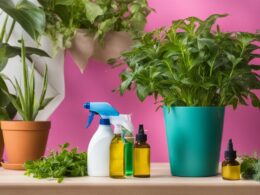Are you considering installing artificial grass in your outdoor space? You may be wondering, how long does artificial grass last?
Well, you’ve come to the right place! In this article, we will explore the factors that contribute to the lifespan of artificial grass and provide you with essential insights to ensure your investment lasts as long as possible.
Artificial grass is made from a combination of synthetic fibers, typically polyethylene or polypropylene, which are durable and resistant to wear and tear. The longevity of your artificial grass is influenced by several factors, including maintenance and care, foot traffic, climate and weather conditions, UV resistance, drainage system, and quality of installation.
By properly maintaining and caring for your artificial grass, such as regular cleaning and brushing, you can extend its lifespan and keep it looking lush and vibrant for years to come. Additionally, choosing high-quality artificial grass and ensuring proper installation will contribute to its durability.
So, whether you’re looking to create a safe play area for your kids or a low-maintenance backyard oasis, understanding the lifespan of artificial grass is crucial. Let’s dive into the details and make an informed decision that prioritizes both safety and longevity.
Quick Summary
- The lifespan of artificial grass is influenced by factors such as maintenance, foot traffic, climate, UV resistance, drainage, and installation quality.
- Regular cleaning, brushing, and proper maintenance can extend the lifespan of artificial grass.
- High-quality materials and proper installation contribute to the durability of artificial grass.
- Artificial grass can last 15 to 25 years with proper care and maintenance.
The Composition of Artificial Grass
Artificial grass, with its innovative blend of synthetic materials, has a lifespan that can impressively exceed your expectations. When it comes to the composition of artificial grass, it is typically made up of three main components: the backing, the blades, and the infill.
The backing is the foundation of artificial grass and provides stability and durability. It’s usually made of a strong, woven fabric that prevents the grass from tearing or stretching.
The blades, on the other hand, are the visible part of the grass and are designed to mimic the look and feel of natural grass. They’re made of a combination of polyethylene and polypropylene, which gives them their softness and resilience.
Lastly, the infill is the material that is placed between the blades to provide support and cushioning. It can be made of various materials, such as silica sand or rubber granules. The infill also helps to keep the blades upright and prevents them from matting down over time.
Artificial grass installation offers many benefits, including saving time and money on maintenance, conserving water, and providing a safe and clean environment for children and pets. With proper care and maintenance, artificial grass can last anywhere from 15 to 25 years, depending on the quality of the materials used and the amount of foot traffic it receives. So, if you’re looking for a long-lasting and low-maintenance alternative to natural grass, artificial grass is definitely worth considering.
Maintenance and Care
To keep your synthetic turf in top condition, you’ll need to regularly maintain and care for it. Here are some maintenance tips and cleaning techniques to ensure the longevity and safety of your artificial grass:
- Regular brushing: Use a stiff bristle brush to remove debris, such as leaves, twigs, and pet hair. Brushing also helps to keep the grass blades upright and maintain their natural look.
- Cleaning spills: Accidental spills can happen, but it’s important to clean them promptly. Use a mild detergent mixed with water to remove stains. Avoid using harsh chemicals that could damage the grass fibers.
- Preventing pet odors: If you have pets, it’s crucial to address any pet odors that may arise. Regularly pick up solid waste and hose down the affected area. For stubborn odors, use a pet-friendly enzymatic cleaner to eliminate them completely.
Taking these maintenance steps will keep your artificial grass looking fresh and vibrant for years to come. Remember to follow these cleaning techniques to ensure a safe and enjoyable outdoor space for you and your loved ones.
Foot Traffic and Usage
Make sure you’re mindful of how much foot traffic your synthetic turf can handle, so you can enjoy it for many years to come. Artificial grass is designed to be durable and withstand a certain level of wear and tear, but excessive foot traffic can still cause damage over time.
It’s important to consider the intended usage of your synthetic turf and choose a product that can handle the activity level. If you have a high-traffic area, such as a playground or a sports field, it’s crucial to select a synthetic turf that is specifically designed for heavy use. These types of artificial grass are made with extra durability in mind, using materials that can withstand constant foot traffic and rough play. They are typically designed with a higher pile height and a stronger backing to ensure longevity.
Regular maintenance and care are also essential in preserving the lifespan of your artificial grass. This includes regularly brushing the turf to prevent matting and removing any debris or leaves that may accumulate. Additionally, keeping the turf clean and free of stains can help prevent premature deterioration.
By being mindful of foot traffic and selecting the appropriate synthetic turf for your needs, you can ensure that your artificial grass lasts for many years. Remember, durability and resistance to wear and tear are key factors to consider when choosing your synthetic turf.
Climate and Weather Conditions
When choosing synthetic turf, it’s crucial for you to consider how climate and weather conditions can impact its performance and longevity. The effect of temperature and the impact of precipitation are two key factors to keep in mind.
Here are some bullet points to help you understand the potential effects of climate and weather conditions on artificial grass:
- Extreme heat: High temperatures can cause the turf to become hot, making it uncomfortable to walk on and potentially posing a risk of burns. It can also lead to the fibers becoming brittle and prone to breaking.
- Freezing temperatures: Artificial grass is designed to withstand freezing temperatures, but it’s important to note that ice and snow can make the surface slippery, increasing the risk of accidents.
- Heavy rain: Synthetic turf is designed to drain water quickly, but heavy rain can still cause pooling and flooding if the installation is not properly designed. This can lead to a slippery surface and potential safety hazards.
- High humidity: In humid climates, artificial grass may require more frequent cleaning to prevent the growth of mold and mildew, which can create a slippery and unsafe surface.
Considering these factors will help you choose the right type of artificial grass that can withstand the climate and weather conditions in your area, ensuring its longevity and safety for years to come.
UV Resistance and Fading
UV resistance is crucial in artificial grass because it helps prevent fading and discoloration. When exposed to sunlight, artificial grass can start to fade and lose its vibrant color over time. However, with UV resistance, the grass is better equipped to withstand the damaging effects of the sun and retain its original appearance for a longer period.
Importance of UV resistance in artificial grass
The longevity of artificial grass greatly depends on the level of UV resistance it possesses. UV rays from the sun can cause fading and deterioration over time, which is why UV protection is crucial for maintaining the durability of artificial grass. By incorporating UV-resistant materials into the manufacturing process, artificial grass can withstand prolonged exposure to the sun without losing its vibrant color or structural integrity. This is especially important for those who prioritize safety and want a long-lasting and reliable outdoor surface. The benefits of UV protection in artificial grass include preserving its appearance, ensuring a safe environment for children and pets, and extending its lifespan. With proper UV resistance, you can enjoy your artificial grass for many years to come.
| Importance of Durability | Benefits of UV Protection | Safety and Longevity |
|---|---|---|
| Ensures long-lasting performance | Preserves vibrant color | Provides a safe environment |
| Withstands harsh weather conditions | Extends lifespan | Protects children and pets |
| Reduces maintenance and replacement costs | Prevents fading and deterioration | Ensures a reliable outdoor surface |
| Enhances the overall appearance | Maintains structural integrity | Offers peace of mind |
| Provides a durable and reliable surface | Increases the value of your property | Allows for worry-free enjoyment |
Preventing fading and discoloration
To prevent fading and discoloration, you need to ensure that your artificial grass maintains its vibrant color over time. This can be achieved through proper maintenance and UV protection.
Artificial grass is designed to withstand the elements, but it is still susceptible to fading and discoloration if not properly cared for. UV protection is crucial in preventing discoloration, as the sun’s rays can cause the fibers to break down and lose their color.
Applying a UV-resistant coating or using artificial grass with built-in UV protection can help prolong the lifespan of your grass and keep it looking vibrant for years to come. Regularly cleaning and removing debris from your artificial grass can also help prevent discoloration by allowing the grass to breathe and maintain its original color.
Drainage System
Imagine standing on your artificial grass and feeling the water effortlessly flow through the efficient drainage system. When it comes to maintaining the longevity of your artificial grass, having a reliable drainage system is crucial.
Not only does it prevent water from pooling on the surface, but it also helps to prevent any potential damage caused by excessive moisture. The drainage efficiency of your artificial grass is determined by its ability to quickly and effectively remove water from the surface. This is achieved through a combination of a well-designed base layer and the use of permeable materials. These materials allow water to pass through easily, ensuring that your artificial grass remains dry and free from any potential damage.
Another important aspect of a good drainage system is water retention. While it may seem counterintuitive, a certain amount of water should be retained within the system to keep the grass hydrated and cool. This is especially important in areas with high temperatures or limited water supply.
By investing in an artificial grass with an efficient drainage system, you are ensuring the safety and longevity of your outdoor space. Not only will it prevent the formation of stagnant water, which can attract insects and become a breeding ground for bacteria, but it will also protect your artificial grass from potential damage caused by excessive moisture.
So, when choosing your artificial grass, make sure to prioritize a reliable drainage system that will keep your outdoor space safe and beautiful for years to come.
Quality and Installation
Now that you understand the importance of a proper drainage system for your artificial grass, let’s delve into the current subtopic: quality assessment and installation techniques.
When it comes to ensuring the longevity of your artificial grass, two key factors come into play: the quality of the materials used and the installation techniques employed.
To assess the quality of artificial grass, there are a few things you should consider:
- Durability: Look for artificial grass that’s designed to withstand heavy foot traffic and resist wear and tear over time. High-quality materials will ensure that your artificial grass lasts for many years to come.
- UV Resistance: Choose artificial grass that’s UV resistant to prevent color fading and deterioration caused by prolonged exposure to the sun.
- Stitch Density: A higher stitch density indicates better quality. It means that the blades of grass are tightly woven together, making the turf more resilient and long-lasting.
- Backing: The backing of the artificial grass should be strong and durable, ensuring that it can withstand the elements and maintain its integrity.
When it comes to installation, hiring a professional with experience and expertise is key. Proper installation techniques, such as accurately preparing the base, properly securing the edges, and ensuring even distribution of infill, will contribute to the longevity of your artificial grass. By taking these steps to assess the quality and employ proper installation techniques, you can enjoy a beautiful and long-lasting artificial grass lawn for years to come.
Lifespan Expectations
The average lifespan of artificial grass depends on several factors. Factors that can extend the lifespan include proper installation, regular maintenance, and choosing high-quality materials.
On the other hand, factors that can decrease the lifespan include heavy foot traffic, exposure to extreme weather conditions, and lack of proper care.
Average lifespan of artificial grass
You’ll be pleased to know that artificial grass typically lasts an average of 15 to 20 years. This means you can enjoy a beautiful and low-maintenance lawn for a significant amount of time. The average lifespan of artificial grass is influenced by various factors, such as the quality of the materials used and the amount of foot traffic it receives. However, with proper care and maintenance, you can expect your artificial grass to maintain its durability and longevity for many years. To give you a better idea, here’s a table showcasing the average lifespan of artificial grass based on its usage:
| Usage | Lifespan Range |
|---|---|
| Low Traffic | 20+ years |
| Medium Traffic | 15-20 years |
| High Traffic | 10-15 years |
| Intense Traffic | 5-10 years |
Remember, regular cleaning and avoiding harsh chemicals can help extend the lifespan of your artificial grass, ensuring a safe and beautiful outdoor space for years to come.
Factors that can extend or decrease the lifespan
To ensure your artificial turf withstands the test of time, there are several factors that can either prolong or shorten its lifespan. Here are some factors affecting durability and tips for increasing longevity:
- Proper installation: A well-installed artificial grass will have a longer lifespan. Make sure it’s installed by professionals who follow the manufacturer’s guidelines.
- Regular maintenance: Regular cleaning and brushing of your artificial turf can help remove debris and prevent matting. This will ensure that the grass stays looking fresh and lasts longer.
- Protect from excessive heat: High temperatures can affect the durability of artificial grass. Consider shading the area or using a heat-resistant infill material to protect the turf from the sun’s harsh rays.
By following these tips and taking care of your artificial grass, you can extend its lifespan and enjoy a beautiful and safe outdoor space for years to come.
Frequently Asked Questions
Is artificial grass safe for pets and children to play on?
Artificial grass is safe for pets and children to play on. It provides numerous benefits for landscaping projects, such as low maintenance and durability. Compared to natural grass, it is cost-effective for pet owners in terms of maintenance and water usage.
Can I install artificial grass on top of concrete or pavement?
Yes, you can install artificial grass on concrete or pavement. It provides a safe and comfortable surface for children and pets to play on, and it eliminates the need for harmful pesticides and fertilizers.
How does artificial grass fare in extreme temperatures or harsh weather conditions?
For hot climates, maintain artificial grass by hosing it down to cool the surface and prevent overheating. Extreme weather can impact durability, so consider installing artificial grass designed to withstand harsh conditions for maximum safety.
Can artificial grass be repaired if it gets damaged?
Yes, artificial grass can be repaired if it gets damaged. There are various artificial grass repair techniques available to fix issues such as tears or burns. The cost of repairing damaged artificial grass depends on the extent of the damage.
Will artificial grass fade over time, and if so, how can it be prevented?
To prevent artificial grass from fading over time and maintain its color, you can take some precautions. Regularly clean and remove debris, avoid using harsh chemicals, and install shade structures to protect it from excessive sunlight.
Conclusion
In conclusion, artificial grass can last for many years with proper care and maintenance. By following regular cleaning routines and protecting it from excessive foot traffic, you can extend its lifespan.
Additionally, its durability can be influenced by climate conditions and the quality of installation. UV resistance and a well-designed drainage system are also important factors to consider.
With these considerations in mind, you can expect your artificial grass to provide a long-lasting and beautiful alternative to natural grass.









